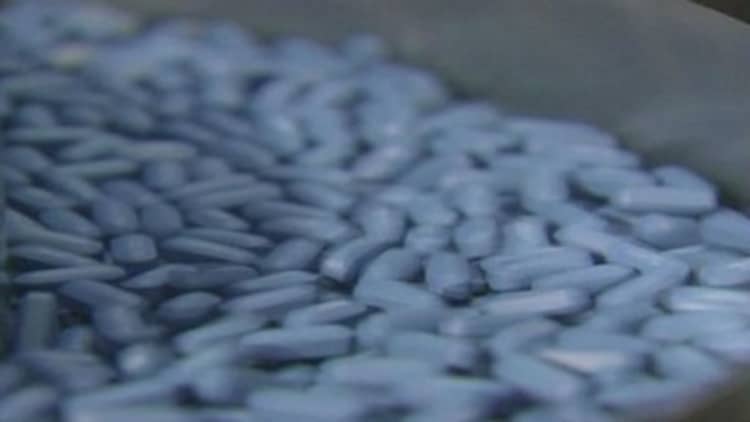
The federal government Wednesday nearly tripled, to 275, the number of patients to which an authorized doctor can prescribe a drug that helps patients control their dependence on painkillers and heroin.
The move was part of several announced by the Obama administration as part of an effort to stem the opioid abuse epidemic that is killing nearly 80 people from overdoses every day, a total of 28,647 annually in the United States.
The administration also renewed its call on Congress to approve a $1.1 billion budget request to combat that epidemic.
"We have to turn the tide of this epidemic," said Health and Human Services Secretary Sylvia Burwell, as she revealed that the cap on prescriptions of the opioid-abuse medication buprenorphine will be raised as of this summer.
"The opioid epidemic is one of the most pressing public health issues in the United States. More Americans now die from drug overdoses than car crashes, and these overdoses have hit families from every walk in life and across our entire nation."
Doctors who are currently allowed to prescribe the drug buprenorphine to up to 100 patients will be allowed to prescribe that medication to up to 275 people if they obtain a waiver, officials said.
Buprenorphine is one of several approved medications for opioid use disorder, and in oral form has become an increasingly used tool for eliminating opioid withdrawal symptoms in addicts.
Doctors who want to increase the number of buprenorphine prescriptions they can write must have additional credentialing in addiction medicine or addiction psychiatry from a specialty medical board and/or a professional society or practice in a qualified setting, according to a press release announcing the increased cap.
Currently, fewer than 32,000 doctors are authorized by the federal government to prescribe buprenorphine. But only about 6,000 doctors write about 90 percent of the total prescriptions in the United States.
Research has shown that recovering addicts who do not manage their dependence with medication are significantly more likely to relapse into illicit drug use than people who take buprenorphine, which is often sold under the brand name Suboxone, or other medications including methadone and naltrexone.
About a quarter of the 2.8 million people estimated to have diagnosed opioid abuse disorder take buprenorphine.
In May, the Food and Drug Administration approved the first-ever buprenorphine implant, a device called Probuphine that is placed in users' arms and lasts for six months.
Behshad Sheldon, CEO of Braeburn Pharmaceuticals, which is licensed to sell Probuphine in the U.S., welcomed the expansion of the prescription cap, but said more should be done to increasing access to opioid use treatment.
"The steps taken today will help more Americans gain access to evidence-based medicine for the treatment of opioid addiction," Sheldon said.
"Exempting injectable and implantable formulations of buprenorphine from counting toward the patient limit would also make a critical difference. Overall the progress is very encouraging," Sheldon said.
In addition to the new prescription cap rule, HHS said a rule is being proposed that will potentially relieve pressure some doctors might feel to overprescribe opioid painkillers, by removing questions about pain management from a consumer survey about hospitals. That survey is tied to the Medicare payments that hospitals receive from the federal government.
Officials also said that clinicians at the Indian Health Service will require its opioid prescribers and pharmacies to check state prescription drug monitoring-program databases before prescribing or dispensing any opioid for longer than one week. HHS said checking those databases helps identify patients who might have an opioid misuse problem "and prevent diversion of drugs."
HHS also said it will launch more than one dozen new studies on opioid misuse and pain treatment.
The White House, in a statement issued about the various moves, said, "The president has made clear that addressing this epidemic is a priority for his administration."
"While federal agencies have been using their authority to take every available action they can, Congress needs to take action on what is most urgently needed now: additional funding to make lifesaving treatment available to everyone who seeks it," the White House said.
"The president has called for $1.1 billion in new funding to help Americans who want treatment get it wherever they live," the statement said.
"Every day that passes without Congressional action to provide these additional resources is a missed opportunity to get treatment to those who want it, help prevent overdoses and support communities across the country impacted by this epidemic."


